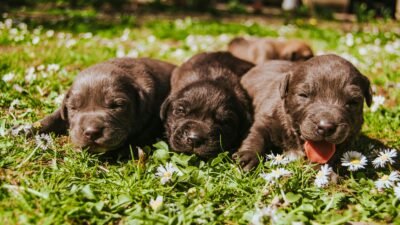Introduction
Dogs licking their paws is a not unusualplace conduct that each puppy proprietor notices at a few point. While it would appear innocent or maybe cute, immoderate licking can suggest underlying fitness or behavioral problems. From primary grooming behavior to clinical concerns, paw licking serves diverse functions for puppies.
Understanding why puppies lick their paws enables proprietors make sure their pets’ well-being. This article uncovers the capability motives in the back of this conduct, symptoms and symptoms to observe for, and powerful treatments to control or deal with the trouble.
Normal Grooming Behavior
Paw licking is regularly a part of a canine’s ordinary grooming process. After a stroll or play session, they will smooth dirt, debris, or irritants off their paws. This is particularly not unusualplace in fastidious breeds or puppies uncovered to moist or muddy conditions.
When It’s Normal:
Brief licking after being outdoors.
Occasional interest to the paws with none symptoms and symptoms of discomfort.
Allergies: A Leading Cause
One of the maximum not unusualplace motives for immoderate paw licking is allergies. Dogs may be allergic to diverse triggers, together with:
Environmental allergens: Pollen, grass, mold, or dirt mites.
Food allergies: Certain proteins, grains, or synthetic components of their weight loss program.
Chemical irritants: Cleaning products, de-icing salts, or pesticides.
Symptoms of Allergies:
Redness or infection among paw pads.
Scratching, ear infections, or pores and skin irritations along paw licking.
Prevention and Treatment:
Use hypoallergenic wipes to smooth paws after walks.
Switch to an removal weight loss program to become aware of meals allergens.
Consult your veterinarian approximately antihistamines or hypersensitivity treatments.
three. Dry or Cracked Paw Pads
Cold climate, warm pavement, or publicity to difficult surfaces can motive a canine’s paw pads to end up dry, cracked, or sore. Licking presents brief relief, however it may exacerbate the trouble via way of means of inflicting similarly inflammation.
Signs to Look For:
Visible cracks or peeling on paw pads.
Limping or reluctance to stroll.
How to Help:
Apply canine-secure paw balms or moisturizers to maintain pads hydrated.
Avoid strolling on intense surfaces like icy sidewalks or warm asphalt.
Pain or Injury
If a canine has stepped on

thing sharp, like a thorn or damaged glass, they will lick their paws to appease the pain. Injuries together with cuts, bruises, or maybe sprains can result in chronic licking.
How to Spot an Injury:
Limping or favoring one paw.
Swelling, bleeding, or seen overseas items withinside the paw.
What to Do:
Inspect the paw cautiously for wounds or embedded debris.
Clean minor accidents with puppy-secure antiseptics.
Seek veterinary take care of deep cuts or unexplainable pain.
Parasites and Infections
Fleas, ticks, or mites can worsen a canine’s paws, inflicting them to lick excessively. Fungal or bacterial infections, together with yeast infections, also are not unusualplace culprits.
Signs of Parasites or Infections:
Constant licking or chewing of paws.
Foul smell or discoloration among the toes.
Hair loss across the paws.
Treatment:
Use flea and tick preventatives year-round.
Consult a vet for antifungal lotions or antibiotics if an contamination is suspected.
Behavioral Causes: Anxiety or Boredom
Dogs regularly lodge to licking their paws as a coping mechanism for stress, anxiety, or boredom. This repetitive conduct is similar to nail-biting in humans.
Triggers for Stress:
Separation anxiety.
Sudden adjustments withinside the environment, together with a pass or new puppy.
Lack of intellectual or bodily stimulation.
How to Address Behavioral Licking:
Increase exercising and playtime to relieve boredom.
Provide interactive toys or puzzles to interact your canine’s mind.
Consider calming dietary supplements or pheromone diffusers for irritating puppies.
Obsessive-Compulsive Disorder (OCD)
In uncommon cases, immoderate paw licking will become a compulsive conduct. Dogs with OCD can also additionally lick their paws obsessively, even if there is no bodily or environmental motive.
Signs of OCD in Dogs:
Licking that interferes with each day activities.
Persistent attention at the identical paw or spot.
Treatment Options:
Consult a veterinarian or animal behaviorist.
Use conduct amendment strategies and wonderful reinforcement.
Medication can be endorsed in intense cases.
Nutritional Deficiencies
A terrible weight loss program missing

vital nutrients, together with omega-three fatty acids, can bring about dry pores and skin and paw inflammation. Dogs can also additionally lick their paws to appease those symptoms.
How to Ensure Proper Nutrition:
Feed a balanced, awesome canine meals.
Consider dietary supplements like fish oil to enhance pores and skin and coat fitness.
Regularly evaluation your canine’s weight loss program together along with your veterinarian.
Seasonal Factors
Winter: De-icing salts and bloodless can worsen paws.
Summer: Hot pavement and grass pollen can also additionally motive discomfort.
Seasonal climate adjustments can exacerbate paw licking:
Seasonal Care Tips:
Wash paws with lukewarm water after walks.
Use canine-secure booties to defend paws for the duration of intense climate.
Conclusion
Paw licking in puppies can variety from a innocent grooming dependancy to a signal of underlying fitness or behavioral concerns. By paying near interest to the frequency and context of this conduct, you could higher apprehend what your canine is probably experiencing.
Regular inspections, a balanced weight loss program, and spark off interest to symptoms and symptoms of damage or inflammation can maintain your canine’s paws healthy. If immoderate licking persists, consulting a veterinarian guarantees that any hidden problems are addressed. Remember, glad paws imply a glad canine—so do not neglect this vital thing of your bushy friend’s well-being.




